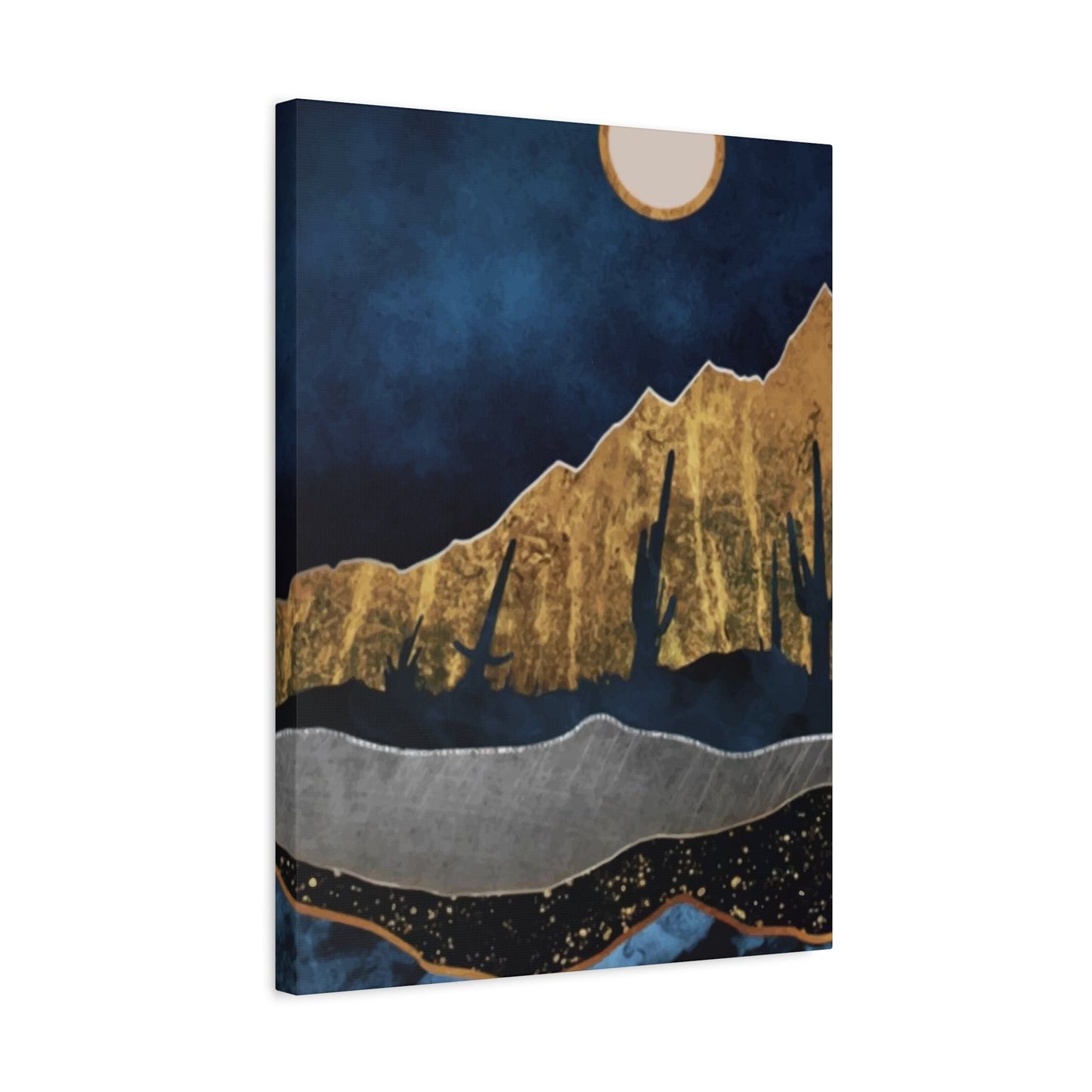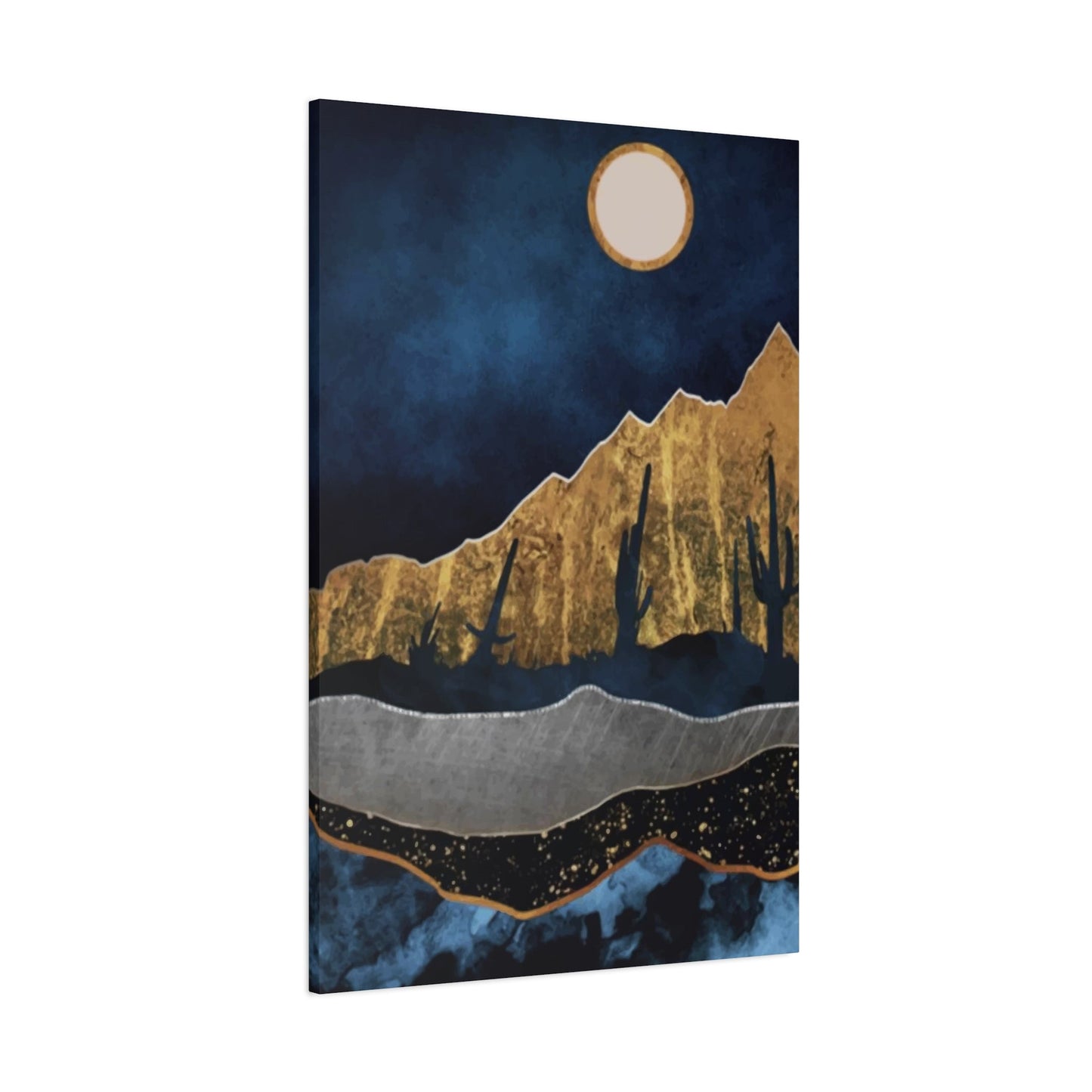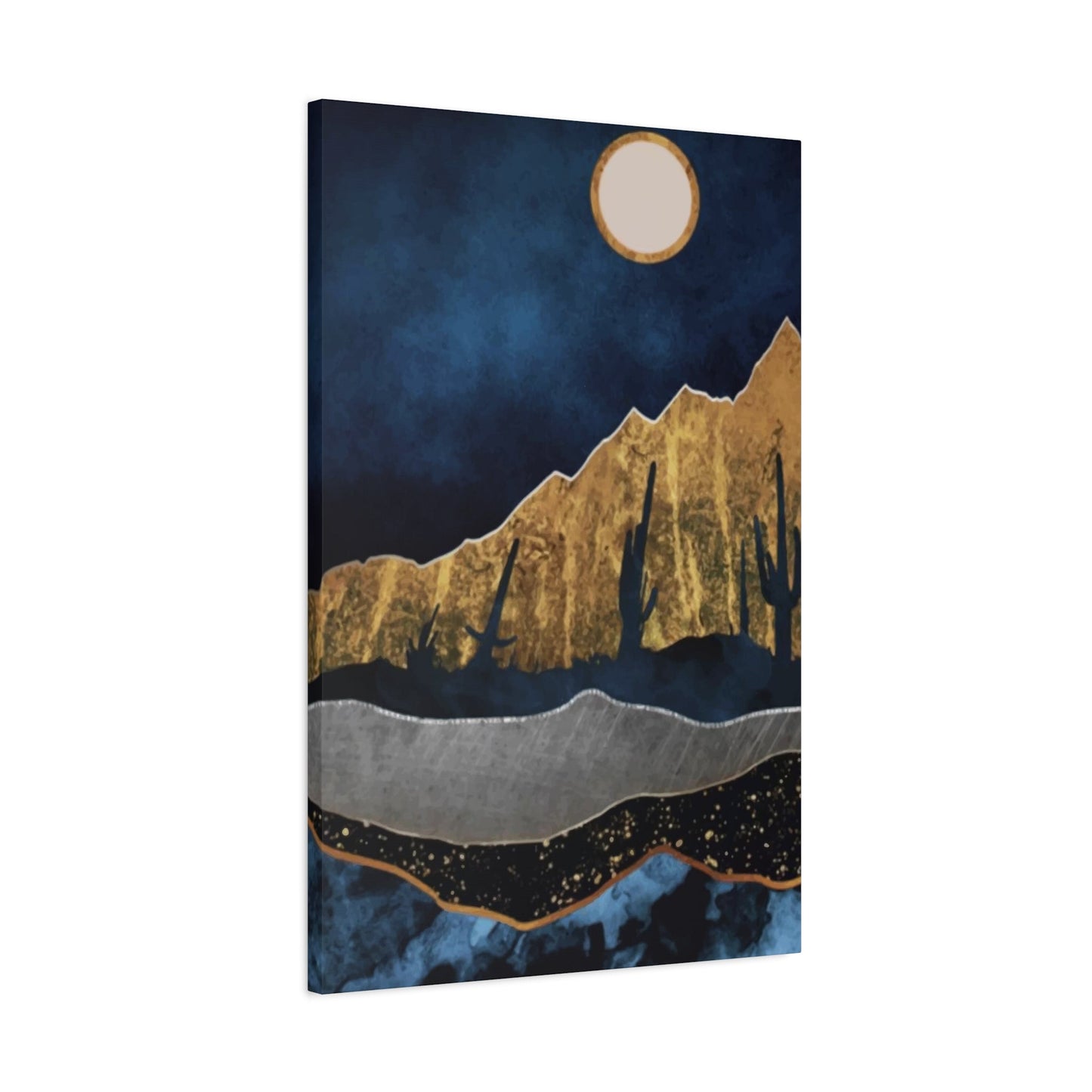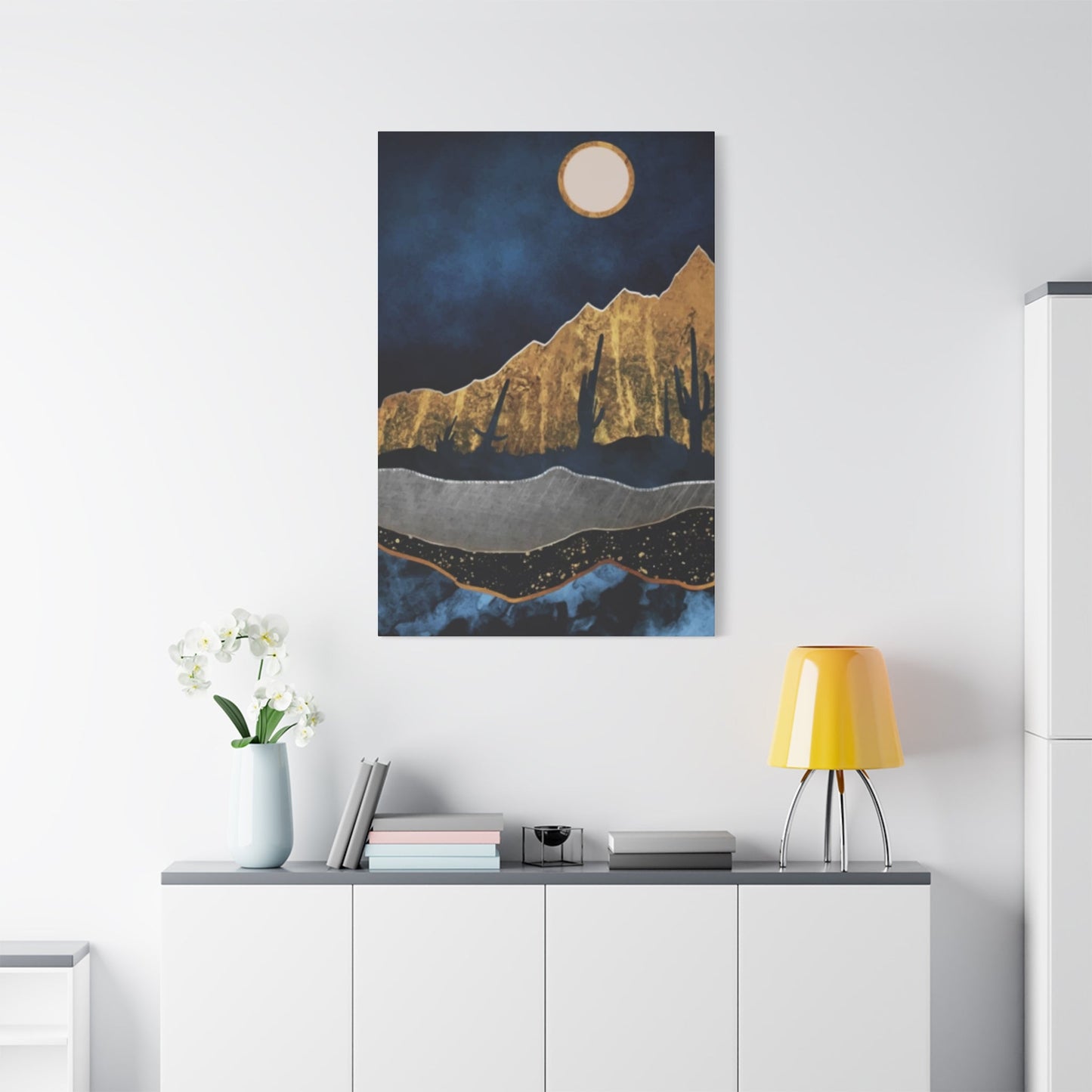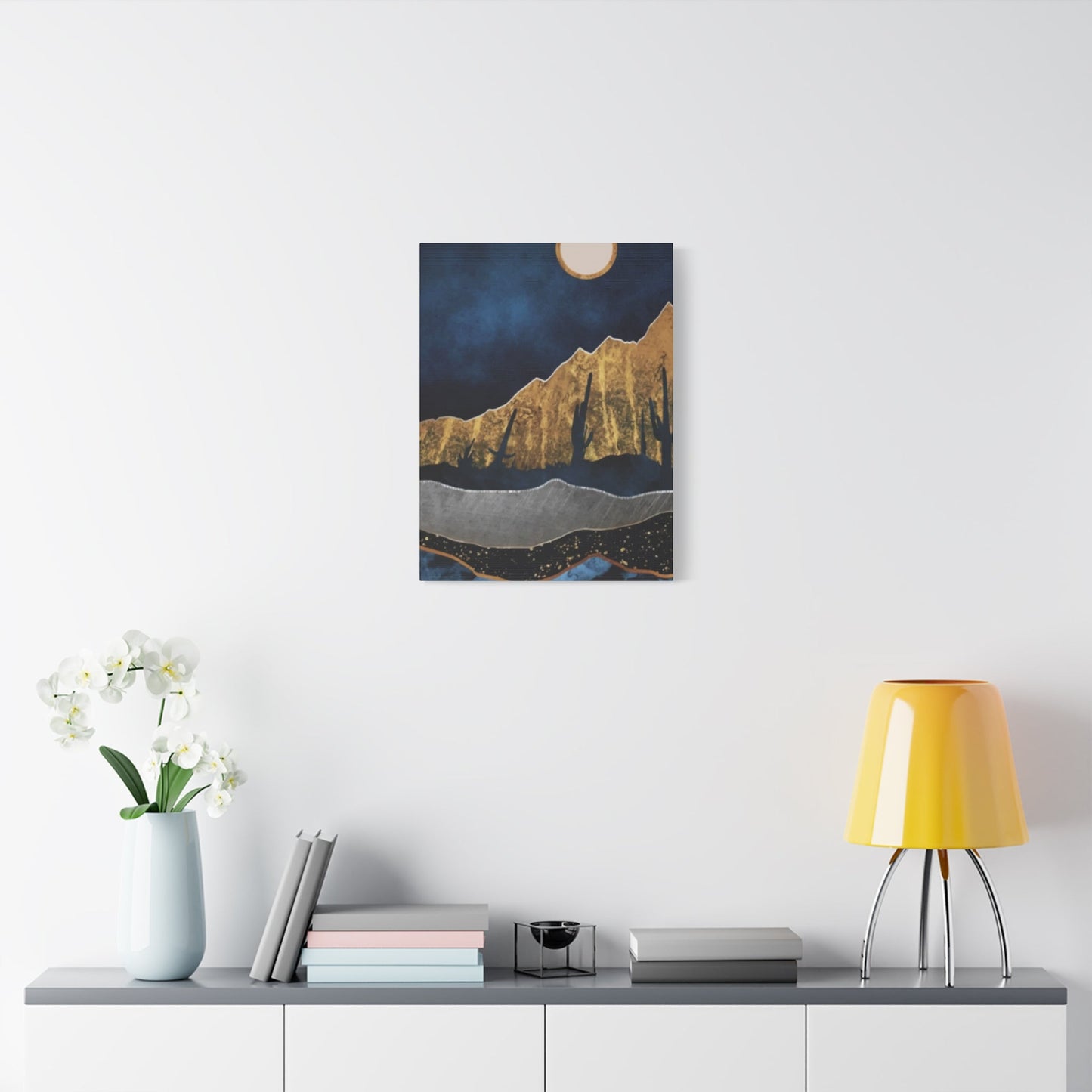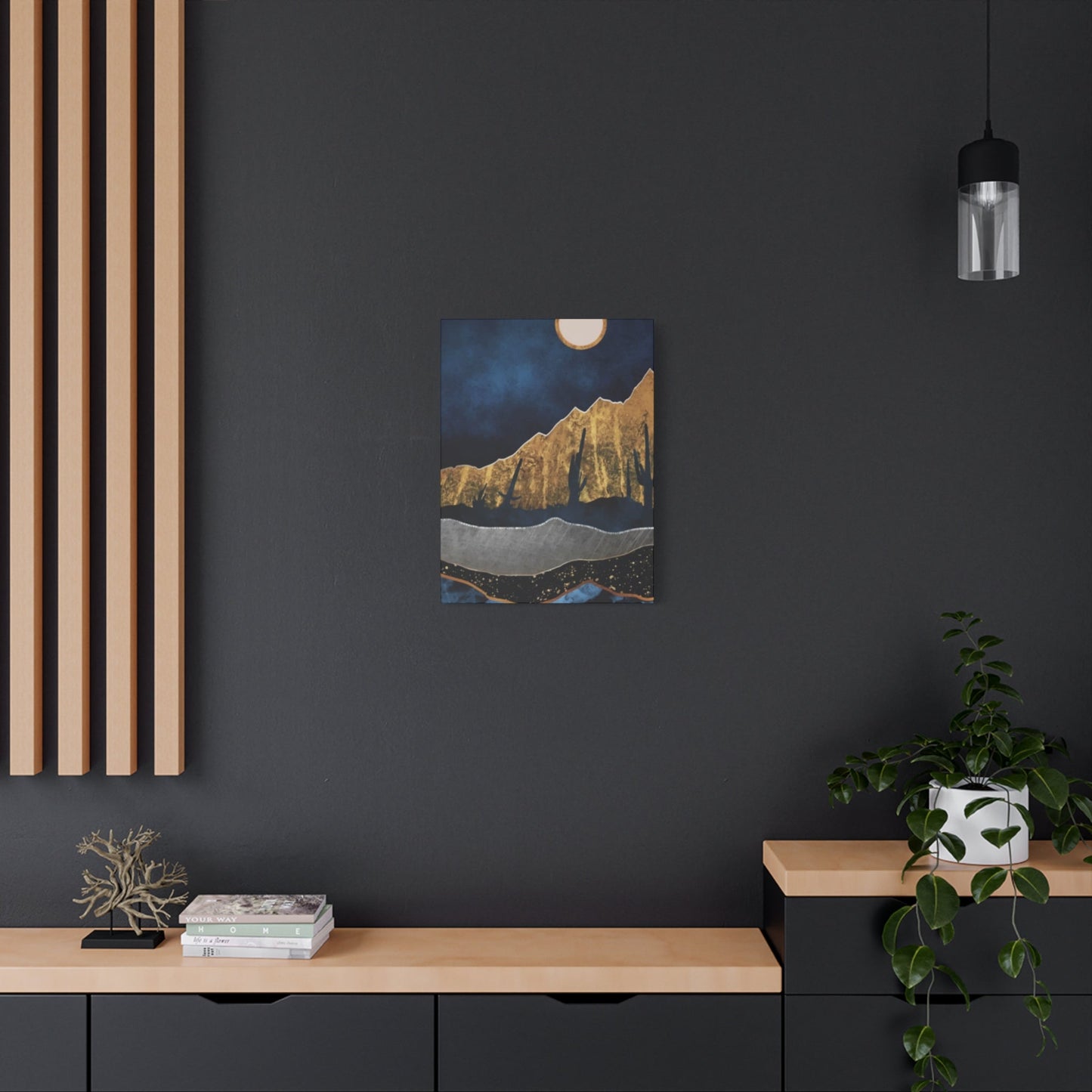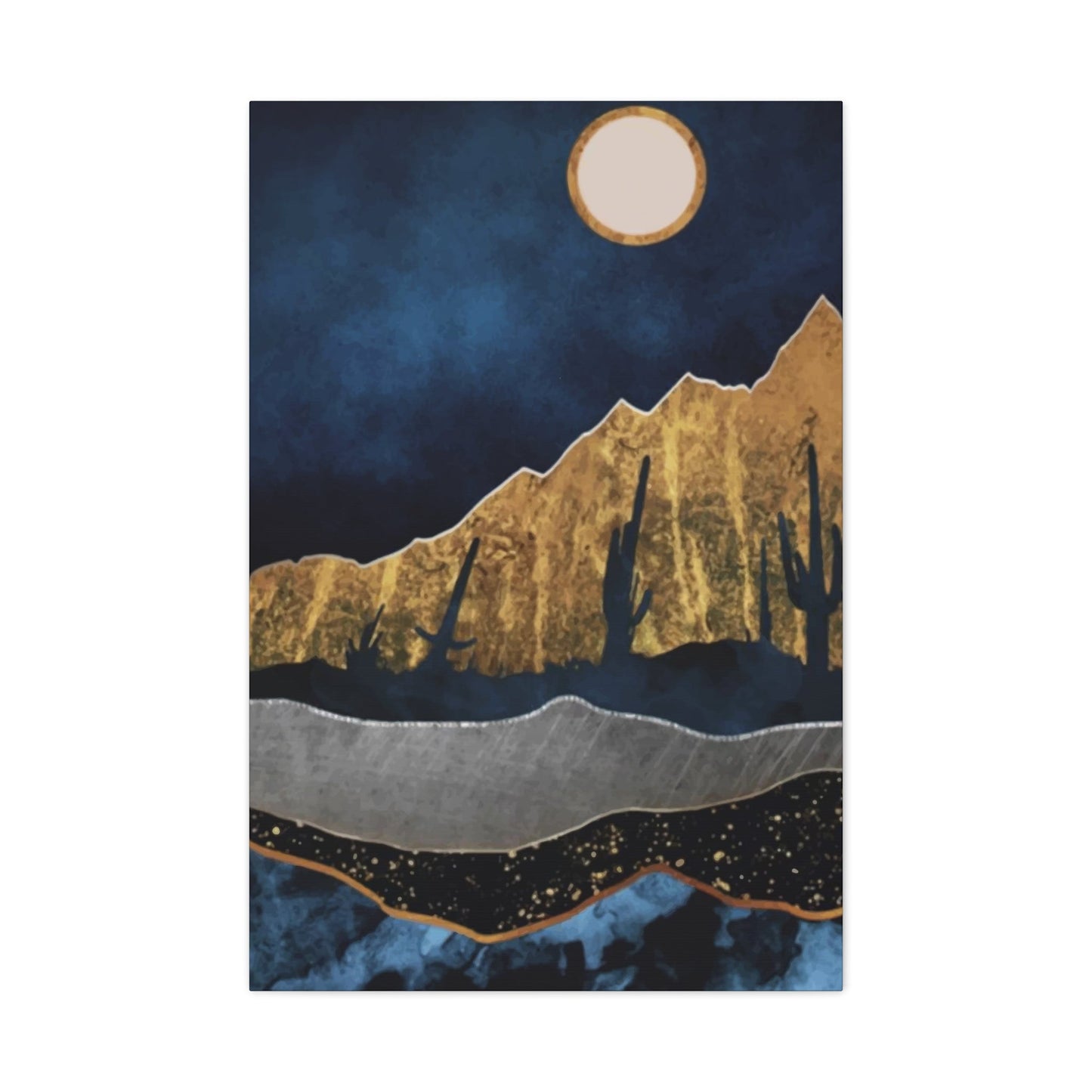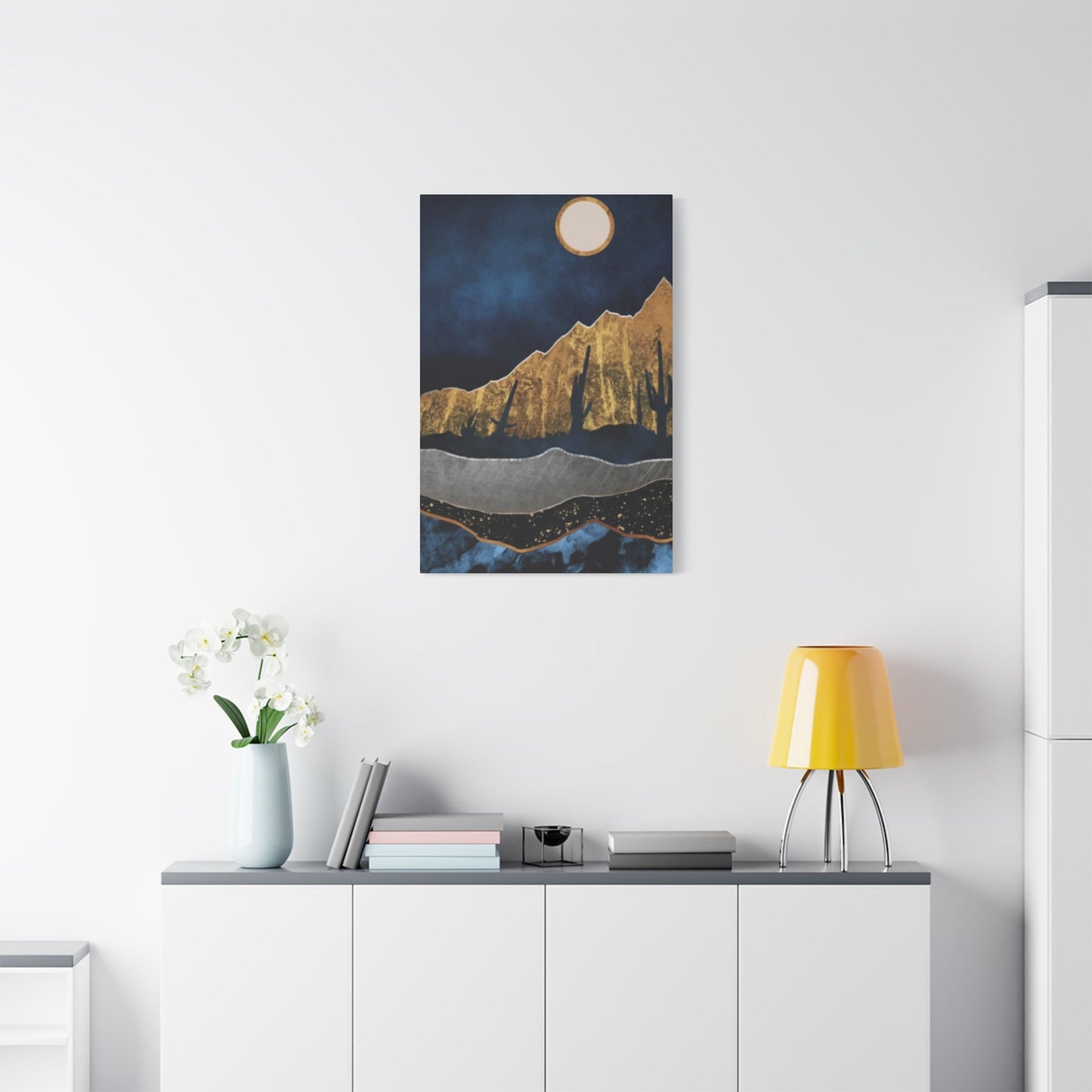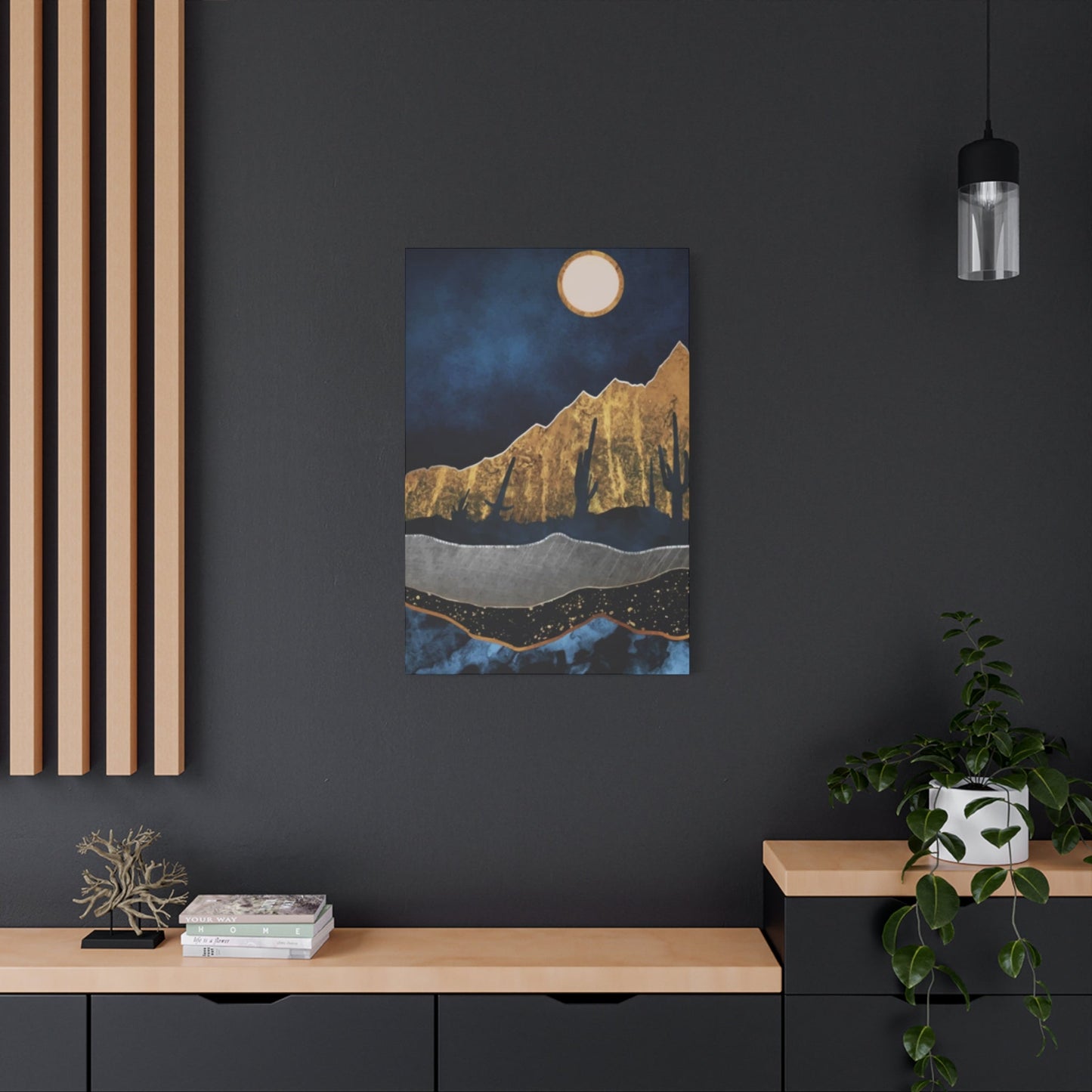Capturing the Magic of Night: A Guide to Night Wall Art Styles
The allure of nocturnal cityscapes and evening landscapes has captivated artists and art enthusiasts for centuries. Night view wall art represents one of the most compelling and emotionally resonant forms of visual expression available today. These artistic pieces transform ordinary rooms into extraordinary environments that evoke mystery, romance, and urban sophistication. Whether you're drawn to the twinkling lights of metropolitan skylines, the serene beauty of moonlit natural landscapes, or the vibrant energy of neon-lit streets, night view wall art offers endless possibilities for creating stunning visual narratives within your living environment.
The growing popularity of nocturnal artwork stems from its unique ability to capture moments when the world transforms. During daylight hours, we see the world in its practical, functional state. However, as darkness falls, cities and landscapes take on entirely different personalities. Artificial lighting creates dramatic contrasts, shadows become more pronounced, and colors appear more saturated and mysterious. This transformation is precisely what makes night view wall art so captivating and emotionally powerful.
Contemporary homeowners increasingly recognize the value of incorporating meaningful artwork that reflects their personal aesthetic preferences and lifestyle choices. Night view wall art serves multiple purposes beyond mere decoration. These pieces can establish mood, create focal points, enhance existing color schemes, and serve as conversation starters. The versatility of nocturnal themes allows for seamless integration into various decorative styles, from modern minimalist approaches to more traditional or eclectic arrangements.
The technical aspects of creating compelling night view artwork require sophisticated understanding of lighting, contrast, and color theory. Artists working in this genre must master the delicate balance between illuminated and shadowed areas, ensuring that their compositions maintain visual interest without becoming overwhelming or chaotic. The interplay between artificial and natural light sources creates opportunities for dramatic visual effects that are simply impossible to achieve in daylight compositions.
Digital photography and printing technologies have revolutionized the accessibility and quality of night view wall art. Modern printing techniques can reproduce the subtle gradations of light and shadow that make nocturnal scenes so compelling. High-resolution imaging captures details that might be lost in traditional painting methods, while advanced color reproduction ensures that the vibrant blues, deep blacks, and warm artificial lighting appear authentic and visually striking.
The psychological impact of night view wall art extends beyond aesthetic appreciation. Research in environmental psychology suggests that visual representations of illuminated environments can influence mood, productivity, and overall well-being. The calming effect of looking at serene nighttime scenes can help reduce stress and promote relaxation, making these artworks particularly valuable in bedrooms, meditation areas, and other personal retreats.
Night View Skyline Paintings
Metropolitan skylines at night represent some of the most iconic and sought-after subjects in contemporary wall art. These compositions capture the essence of urban energy and human achievement, transforming concrete and steel structures into glowing beacons of civilization. The artistic interpretation of city skylines requires careful attention to architectural details, lighting patterns, and atmospheric conditions that define each unique urban environment.
Professional artists specializing in skyline paintings understand that each city possesses its own distinctive visual signature. The jagged peaks of Manhattan's skyscrapers create entirely different compositional challenges than the sprawling horizontal expanse of Los Angeles or the historic spires of European capitals. Successful skyline paintings capture not just the physical appearance of buildings, but the cultural and emotional essence of the places they represent.
The technical execution of skyline paintings demands mastery of perspective, proportion, and color harmony. Artists must carefully balance the intensity of artificial lighting with the softer tones of the evening sky, ensuring that neither element overwhelms the composition. The gradual transition from twilight to complete darkness provides opportunities for subtle color variations that add depth and visual interest to the overall piece.
Modern skyline paintings often incorporate mixed media techniques, combining traditional painting methods with digital elements or photographic references. This hybrid approach allows artists to achieve levels of detail and accuracy that would be extremely difficult using conventional painting techniques alone. The result is artwork that maintains the emotional resonance of hand-created pieces while benefiting from the precision and clarity of contemporary imaging technologies.
The popularity of skyline paintings reflects our fascination with urban environments and the human capacity for architectural achievement. These artworks serve as celebrations of metropolitan culture, capturing moments when cities appear most magical and inspiring. For urban dwellers, skyline paintings can evoke feelings of pride and connection to their home cities. For those living in rural or suburban areas, these pieces can provide a window into the excitement and energy of metropolitan life.
Color palettes in skyline paintings typically emphasize cool blues and warm yellows, creating pleasing contrasts that mirror the actual experience of viewing city lights at night. The deep blue tones of the evening sky provide an elegant backdrop for the warm, golden illumination emanating from windows and street lighting. This color combination has proven particularly effective in residential settings, complementing a wide range of existing decorative schemes.
The compositional structure of skyline paintings can vary dramatically depending on the artist's vision and the specific urban environment being depicted. Some artists prefer panoramic formats that capture extensive city views, while others focus on specific architectural landmarks or neighborhoods. The viewing angle also plays a crucial role in determining the emotional impact of the piece. Elevated perspectives create feelings of grandeur and overview, while street-level views can feel more intimate and immersive.
Lighting effects in skyline paintings require particular attention to authenticity and visual appeal. Artists must understand how different types of artificial lighting appear at various distances and atmospheric conditions. Office building windows create uniform grids of light, while street lighting produces more diffuse, atmospheric effects. Vehicle headlights and taillights add dynamic linear elements that can guide the viewer's eye through the composition.
The scale and proportion of skyline paintings must be carefully considered to ensure maximum visual impact. Large-format pieces can create dramatic focal points in living rooms or offices, while smaller works might be more appropriate for bedrooms or hallways. The aspect ratio of the composition should complement the intended display location, whether that's above a sofa, behind a dining table, or in a narrow corridor.
Contemporary skyline paintings often incorporate elements of fantasy or artistic interpretation alongside realistic depictions. Some artists exaggerate the intensity of lighting effects to create more dramatic visual impact, while others might simplify architectural details to focus attention on overall composition and mood. These artistic liberties allow for greater creative expression while maintaining the essential character of the urban environment being portrayed.
Using Night View Art to Create Mood
The strategic placement and selection of night view art can dramatically influence the emotional atmosphere of any room. These artworks possess unique capabilities for establishing mood through their inherent associations with mystery, romance, tranquility, or urban sophistication. Understanding how to leverage these emotional connections allows homeowners to create environments that support their desired lifestyle and activities.
The psychological impact of viewing nocturnal scenes is deeply rooted in human evolution and cultural associations. Throughout history, nighttime has been associated with rest, intimacy, mystery, and contemplation. These associations are automatically triggered when we view artistic representations of nighttime scenes, creating immediate emotional responses that can be harnessed for decorative purposes.
Color temperature plays a crucial role in determining the mood created by night view art. Cooler color palettes dominated by blues and purples tend to create calming, peaceful atmospheres that are ideal for relaxation and rest. These cooler tones can be particularly effective in bedrooms, bathrooms, and meditation areas where tranquility is desired. Warmer color schemes featuring golden yellows and soft oranges create more energetic, welcoming environments suitable for social areas and workspaces.
The subject matter of night view art also significantly influences mood creation. Serene natural scenes such as moonlit lakes or starry skies promote feelings of peace and contemplation. Urban nightscapes can evoke excitement, sophistication, or cosmopolitan energy. Abstract interpretations of night views allow for more personal emotional connections, as viewers can project their own associations and experiences onto the artwork.
Lighting conditions in the room where night view art is displayed can enhance or diminish its mood-creating potential. Proper illumination of the artwork ensures that colors and details remain visible and impactful. However, overly bright lighting can diminish the mysterious, intimate qualities that make night view art so emotionally compelling. Subtle, indirect lighting often provides the best balance, allowing the artwork to maintain its nocturnal character while remaining clearly visible.
The size and placement of night view art affects its ability to establish mood within a given environment. Large-scale pieces can dominate a room and create immersive experiences that transport viewers into the depicted scene. Smaller works might provide subtle mood enhancement without overwhelming the existing decorative scheme. The height at which artwork is hung also influences its psychological impact, with eye-level placement creating the most direct emotional connection.
Grouping multiple night view pieces together can amplify their mood-creating effects through visual repetition and thematic reinforcement. A collection of complementary nocturnal scenes can create a cohesive atmosphere that permeates the entire room. However, careful attention to color harmony and compositional balance is essential to prevent visual chaos or overwhelming sensory input.
The frame and matting choices for night view art can either enhance or detract from its mood-creating capabilities. Simple, understated frames allow the artwork itself to establish the emotional tone, while ornate or highly decorative frames can compete with the piece for attention. Neutral-colored mats help focus attention on the artwork while providing visual breathing room around the composition.
Seasonal considerations can affect how night view art influences mood throughout the year. During winter months, warm-toned nocturnal scenes can provide psychological warmth and comfort. Summer displays might benefit from cooler-toned pieces that create feelings of refreshing evening breezes and peaceful twilight hours. This seasonal rotation can help maintain the emotional impact of night view art collections over time.
The context provided by surrounding decorative elements significantly influences how night view art affects mood. Comfortable seating arrangements encourage prolonged contemplation of the artwork, allowing its emotional impact to develop fully. Complementary accessories such as soft lighting, textured fabrics, and natural materials can reinforce the desired atmospheric qualities established by the nocturnal artwork.
Personal associations and memories play important roles in determining how specific night view art pieces affect individual viewers. Artwork depicting familiar locations or scenes reminiscent of meaningful experiences can create powerful emotional responses that transcend purely aesthetic appreciation. These personal connections make night view art particularly effective for creating intimate, meaningful environments that reflect individual personalities and life experiences.
Famous Night View Spots Around the World
Certain locations around the globe have achieved legendary status for their spectacular nighttime vistas, inspiring countless artists and photographers to capture their unique beauty in various artistic forms. These iconic destinations offer distinctive combinations of natural and artificial lighting that create unforgettable visual experiences. Understanding the characteristics that make these locations special can inform the selection and appreciation of night view wall art depicting similar scenes.
New York City stands as perhaps the most recognizable nighttime cityscape in the world. The Manhattan skyline, viewed from various vantage points such as Brooklyn Heights or the Staten Island Ferry, presents a constantly evolving tapestry of illuminated architecture. The geometric patterns created by lit office windows, the warm glow of street lighting, and the occasional beam of searchlights create a visual symphony that has inspired artists for generations. The city's vertical density allows for dramatic compositions featuring towering structures that seem to reach toward the stars.
Paris offers an entirely different but equally compelling nighttime aesthetic. The City of Light lives up to its nickname through elegant street lighting that illuminates historic architecture with warm, golden tones. The Eiffel Tower, particularly during its hourly light displays, creates a focal point that anchors compositions while the Seine River provides reflective surfaces that double the visual impact of surrounding illumination. The combination of historic architecture and romantic lighting creates an atmosphere of timeless elegance that translates beautifully into wall art.
Tokyo presents a futuristic vision of urban nighttime illumination through its extensive use of neon signage, LED displays, and architectural lighting. The Shibuya crossing area, with its towering digital billboards and constant flow of illuminated traffic, creates a cyberpunk aesthetic that appeals to contemporary art enthusiasts. The interplay between traditional Japanese architectural elements and cutting-edge lighting technology offers unique compositional opportunities for artists working in the night view genre.
Hong Kong's harbor setting creates one of the world's most stunning urban nighttime panoramas. The combination of mountainous terrain, water reflections, and dense high-rise development results in compositions that feature multiple layers of visual interest. The Symphony of Lights show, which illuminates buildings across the harbor in synchronized displays, adds temporal elements that challenge artists to capture movement and change within static compositions.
London's nighttime character emerges from the interplay between historic landmarks and modern urban development. The Thames River provides a unifying element that connects disparate architectural periods and styles, while iconic structures such as Big Ben, the London Eye, and Tower Bridge serve as recognizable focal points. The city's characteristic fog and mist add atmospheric elements that soften lighting effects and create mysterious, romantic moods.
Natural locations also provide inspiration for night view wall art, with certain destinations offering particularly spectacular nocturnal displays. The Aurora Borealis viewing locations in Scandinavia, Alaska, and northern Canada provide opportunities to witness and artistically interpret one of nature's most dramatic lighting phenomena. These ethereal displays of colored light against star-filled skies create compositions that blend natural wonder with cosmic mystery.
Desert locations such as those found in the American Southwest offer incredibly clear night skies that allow for detailed depictions of stellar formations and cosmic phenomena. The absence of light pollution in these remote areas enables artists to capture the full majesty of the Milky Way galaxy and other celestial features. The contrast between the vast, illuminated sky and the dark silhouettes of desert landscapes creates dramatic compositions with strong emotional impact.
Coastal areas provide opportunities for night view art that combines the rhythmic patterns of waves with moonlight reflections and occasionally distant city lights. The interplay between natural and artificial illumination sources creates complex lighting scenarios that challenge artists to balance multiple visual elements while maintaining compositional coherence.
Mountain regions offer elevated perspectives that encompass vast landscapes under starlit skies. The layered silhouettes of mountain ridges create natural compositional elements that add depth and scale to night view artwork. During certain seasons, snow-covered peaks can reflect moonlight and create additional lighting effects that enhance the overall visual impact.
Lakeside locations provide perfect conditions for capturing reflected lighting effects that create mirror images and double the visual impact of surrounding illumination. The still water surfaces act as natural reflectors that can transform simple scenes into complex, symmetrical compositions with enhanced visual interest.
Understanding the unique characteristics of these famous nighttime destinations helps art collectors and enthusiasts make informed decisions about which types of night view wall art will best suit their preferences and environments. Each location offers distinct aesthetic qualities that can complement different decorative styles and personal tastes.
Abstract Night View Canvas Prints
Abstract interpretations of nighttime scenes offer exciting opportunities for artistic expression that transcend literal representation while maintaining the emotional resonance of nocturnal themes. These artworks distill the essence of night views into pure visual elements such as color, shape, texture, and movement, creating pieces that can complement a wide range of decorative styles while providing sophisticated focal points for contemporary living environments.
The appeal of abstract night view canvas prints lies in their ability to suggest familiar nocturnal experiences without being confined to specific geographical locations or architectural details. This universal quality allows viewers to project their own experiences and associations onto the artwork, creating personal connections that enhance emotional engagement. The absence of literal details also makes these pieces more versatile in terms of decorative placement and styling compatibility.
Color relationships form the foundation of successful abstract night view compositions. Artists working in this genre typically employ limited color palettes that emphasize the characteristic tones of nighttime environments. Deep blues and purples suggest the darkness of night skies, while warm yellows and oranges represent artificial lighting sources. The interplay between these opposing temperature ranges creates visual tension and interest that maintains viewer attention over time.
Texture plays a crucial role in abstract night view canvas prints, helping to differentiate between various elements within the composition while adding tactile interest that purely flat images cannot provide. Artists might use impasto techniques to create raised areas that represent bright light sources, or employ smooth, flowing brushstrokes to suggest the movement of water or air. The physical texture of the paint surface interacts with lighting in the display environment, creating subtle variations in appearance throughout the day.
The compositional structure of abstract night view prints often relies on simplified geometric forms that echo the basic shapes found in urban and natural nighttime environments. Vertical elements might suggest building silhouettes or tree trunks, while horizontal bands could represent horizons, water surfaces, or layered atmospheric effects. Circular or irregular shapes might indicate light sources, celestial bodies, or reflected illumination.
Scale relationships within abstract compositions require careful consideration to maintain visual balance and prevent any single element from overwhelming the overall design. Large areas of dark color provide visual rest areas that allow brighter elements to achieve maximum impact. The proportion of light to dark areas should reflect the actual experience of viewing nighttime scenes, where illuminated elements appear as accent points against predominantly dark backgrounds.
Movement and rhythm in abstract night view prints can be suggested through various artistic techniques that guide the viewer's eye through the composition. Repeated shapes or colors create visual rhythms that mirror the regular patterns found in urban lighting or natural phenomena. Diagonal lines or curved forms can imply movement and energy, while more static compositions might emphasize the peaceful, contemplative aspects of nighttime scenes.
The printing process used for abstract night view canvas prints significantly affects the final appearance and longevity of the artwork. High-quality digital printing techniques can reproduce subtle color gradations and texture effects that preserve the artist's original vision while ensuring archival stability. The choice of canvas material and coating also influences how the printed image appears under various lighting conditions in the display environment.
Framing and presentation options for abstract night view canvas prints should complement the artistic style without competing for attention. Simple, modern frames in neutral colors typically work best, allowing the artwork itself to establish the visual tone of the display. Gallery-wrapped canvases that extend the image around the sides of the stretcher eliminate the need for traditional framing while creating a more contemporary presentation style.
The versatility of abstract night view prints makes them suitable for a wide range of architectural and decorative contexts. Their non-literal nature allows them to complement both traditional and contemporary furnishing styles, while their sophisticated color palettes can coordinate with existing decorative schemes. The absence of specific geographical references makes these pieces appropriate for any location, from urban apartments to rural retreats.
Lighting considerations for displaying abstract night view canvas prints require attention to both the preservation of the artwork and the optimization of its visual impact. UV-protective lighting helps prevent color fading over time, while the angle and intensity of illumination can dramatically affect how colors and textures appear to viewers. Experimenting with different lighting arrangements can reveal new aspects of the artwork and maintain visual interest over time.
The emotional impact of abstract night view prints often develops gradually as viewers spend time with the artwork and discover new details or interpretations. This quality makes these pieces particularly valuable for residential settings where daily interaction with the art allows for evolving appreciation and deepening emotional connections.
Night View Art for Bedroom Decor
The bedroom represents one of the most personal and intimate environments in the home, making the selection of appropriate artwork crucial for creating atmospheres that promote rest, relaxation, and emotional well-being. Night view art possesses unique qualities that make it particularly suitable for bedroom decoration, offering visual interest while maintaining the peaceful, calming character essential for quality sleep and personal retreat.
The psychological associations between nighttime imagery and rest make night view art naturally appropriate for bedroom environments. These artworks reinforce the room's primary function while creating visual narratives that can help transition the mind from daily activities to restful states. The typically cooler color palettes found in nocturnal scenes also contribute to the calming atmosphere that bedrooms require for optimal functionality.
Scale considerations for bedroom night view art must balance visual impact with spatial proportions and the intimate nature of the environment. Large-scale pieces can create dramatic focal points above headboards or on accent walls, but they should not overwhelm the room or create visual chaos that disrupts the peaceful atmosphere. Medium-sized artworks often provide the best balance between presence and tranquility in bedroom settings.
Color selection for bedroom night view art should complement the existing decorative scheme while promoting relaxation and rest. Cooler tones such as deep blues, soft purples, and silvery grays create calming effects that support sleep quality. Warmer tones should be used sparingly and in muted intensities to avoid creating overstimulating environments that interfere with rest. The overall color temperature of the artwork should harmonize with the bedroom's lighting design and textile selections.
Subject matter for bedroom night view art should emphasize peaceful, contemplative scenes that promote mental relaxation. Serene lake reflections under moonlight, gentle cityscapes viewed from distance, or abstract interpretations of starry skies can provide visual interest without creating emotional excitement or mental stimulation. Avoiding highly dynamic or energetic compositions helps maintain the bedroom's function as a restorative environment.
Placement strategies for night view art in bedrooms require consideration of both aesthetic impact and practical functionality. Artwork positioned above the headboard creates a natural focal point while remaining visible from various positions within the room. Side wall placements can provide visual interest without competing with the bed for attention. The height of artwork installation should accommodate both standing and reclining viewing angles for optimal appreciation.
Lighting integration with bedroom night view art requires careful balance between illumination and privacy needs. Subtle accent lighting can enhance the artwork's visual impact while maintaining the intimate atmosphere essential for bedroom environments. Dimmer controls allow for adjustment of lighting levels throughout the day, accommodating both detailed art appreciation and restful ambiance creation. Avoiding harsh or bright illumination helps preserve the nocturnal character of the artwork.
The emotional resonance of night view art in bedroom settings can be enhanced through thoughtful coordination with other decorative elements. Soft textiles in complementary colors, natural materials such as wood or stone, and minimal furnishing approaches can reinforce the peaceful qualities of the artwork while creating cohesive decorative schemes. The goal is to create environments that feel harmonious and conducive to relaxation.
Practical considerations for bedroom night view art include selection of appropriate materials and protective measures that ensure longevity in the bedroom environment. Humidity levels, temperature fluctuations, and natural light exposure can affect artwork over time, making proper framing and placement crucial for preservation. Glass or acrylic glazing can provide protection while maintaining visual clarity.
Personal preferences and associations play particularly important roles in bedroom art selection, as these are the most private and individualized environments in the home. Night view art that resonates with personal experiences, memories, or aspirations can create meaningful connections that enhance the emotional value of the bedroom environment. The artwork becomes part of the personal sanctuary that the bedroom represents.
The therapeutic potential of night view art in bedroom settings extends beyond mere decoration to encompass actual health and wellness benefits. Visual representations of peaceful nighttime scenes can help reduce stress and anxiety levels, promoting better sleep quality and overall mental health. The calming influence of appropriate artwork can contribute to the bedroom's function as a restorative retreat from daily pressures.
Seasonal variations in bedroom night view art displays can help maintain visual interest and accommodate changing emotional needs throughout the year. Cooler-toned pieces might be particularly welcome during warm summer months, while slightly warmer nocturnal scenes could provide psychological comfort during winter periods. This flexibility allows the bedroom environment to remain fresh and personally meaningful over time.
Night View of Nature Scenes
Natural environments transformed by darkness offer some of the most serene and emotionally powerful subjects for wall art. These compositions capture the magical transformation that occurs when familiar landscapes are bathed in moonlight, starlight, or the subtle illumination of twilight hours. Night view art featuring natural scenes provides opportunities to bring the calming influence of the outdoors into indoor environments while showcasing the mysterious beauty of nocturnal landscapes.
Moonlit forest scenes represent one of the most popular categories of natural night view art. The interplay between moonlight filtering through tree canopies and the deep shadows created by forest undergrowth produces compositions rich in contrast and atmospheric mystery. Artists working with these subjects must carefully balance the silvery illumination of moonlight with the organic forms and textures of woodland environments, creating pieces that feel both realistic and romantically idealized.
Water features in natural night view art provide opportunities for capturing reflected light effects that add visual complexity and emotional depth to compositions. Lakes, rivers, and coastal scenes become natural mirrors that double the impact of celestial illumination while creating symmetrical compositions with enhanced visual interest. The movement of water surfaces can be suggested through various artistic techniques that convey the gentle motion of waves or the perfect stillness of mountain lakes.
Mountain landscapes under starlit skies offer dramatic opportunities for showcasing the scale and majesty of natural environments. The layered silhouettes of mountain ridges create natural compositional elements that add depth and dimensionality to artwork. The contrast between the vastness of star-filled skies and the solid presence of mountain masses creates powerful visual tension that can be emotionally compelling for viewers seeking connection with natural grandeur.
Desert scenes at night reveal landscapes that are often hidden from appreciation during harsh daylight hours. The clear skies typical of arid regions allow for detailed depiction of stellar formations and cosmic phenomena that are impossible to observe in more populated areas. The stark beauty of desert landforms silhouetted against luminous night skies creates compositions with strong emotional impact and contemporary aesthetic appeal.
Seasonal variations in natural night view art allow for exploration of how different times of year affect the appearance and mood of nocturnal landscapes. Winter scenes might feature snow-covered trees illuminated by moonlight, creating compositions dominated by cool blues and silvery whites. Autumn nightscapes could showcase the warm colors of changing foliage under starlight, while spring scenes might emphasize the fresh growth and renewal associated with longer daylight hours.
Wildlife elements in natural night view art can add narrative interest and emotional connection without overwhelming the overall composition. Subtle suggestions of nocturnal animals such as owls, deer, or other creatures can enhance the authenticity of forest scenes while providing focal points that draw viewer attention. These elements should be incorporated carefully to maintain the peaceful, contemplative character of the artwork.
The technical challenges of creating convincing natural night view art require understanding of how different types of natural illumination affect the appearance of landscapes. Moonlight creates cooler color temperatures and sharper shadows than the warmer tones of sunset or sunrise. Starlight alone produces very subtle illumination that reveals only the basic forms and silhouettes of landscape elements. Artists must master these lighting conditions to create believable and emotionally compelling compositions.
Color palettes for natural night view art typically emphasize the cooler end of the spectrum, with deep blues, purples, and silvery grays dominating the overall scheme. However, subtle variations in color temperature can suggest different atmospheric conditions and times of night. The warm glow of distant city lights on the horizon, the golden tones of a rising moon, or the subtle green hues sometimes present in northern lights can add variety and visual interest to predominantly cool compositions.
The emotional appeal of natural night view art stems from its ability to evoke feelings of peace, solitude, and connection with the natural world. These artworks can serve as visual retreats for urban dwellers who crave contact with natural environments. The calming influence of nocturnal nature scenes makes them particularly appropriate for bedrooms, meditation areas, and other environments dedicated to rest and contemplation.
Abstract interpretations of natural night view scenes allow artists to distill the essential emotional and visual qualities of nocturnal landscapes without being constrained by literal representation. These works might emphasize the rhythmic patterns of waves, the organic curves of hillsides, or the vertical thrust of forest trees while maintaining the color palettes and atmospheric qualities associated with nighttime natural environments.
Combining Night Views with Starry Skies
The integration of celestial elements with terrestrial night views creates some of the most visually striking and emotionally powerful compositions in contemporary wall art. These artworks combine the intimate scale of earthbound landscapes with the infinite vastness of cosmic displays, resulting in pieces that can inspire wonder, contemplation, and a sense of connection with the larger universe. The technical and artistic challenges of successfully combining these elements require sophisticated understanding of both atmospheric perspective and astronomical accuracy.
Star field compositions in night view art must balance scientific accuracy with artistic interpretation to create believable yet visually compelling representations of celestial displays. The Milky Way galaxy provides a natural focal element that can arch across compositions while providing structural coherence to the overall design. Artists must understand how the galaxy's appearance changes throughout the year and from different geographical locations to create authentic-looking representations that enhance rather than contradict the terrestrial elements.
The relationship between foreground landscape elements and background star fields requires careful attention to atmospheric perspective and depth relationships. Closer landscape features should appear more detailed and saturated in color, while distant mountains or horizons become progressively lighter and less distinct. This layering effect helps create convincing three-dimensional depth that allows viewers to feel immersed in the depicted scene rather than viewing a flat, decorative surface.
Light pollution considerations play crucial roles in determining the authenticity and emotional impact of starry sky compositions. Urban or suburban settings typically show fewer visible stars due to artificial lighting interference, while remote wilderness locations can display incredibly detailed stellar formations. Artists must decide whether to prioritize realistic depiction of star visibility for specific locations or to enhance the celestial display for greater visual impact and emotional resonance.
Color relationships between earthbound and celestial elements require sophisticated understanding of how different light sources affect the overall appearance of nocturnal scenes. The warm artificial lighting of cities creates color contrasts with the cooler tones of natural starlight, while moonlight adds its own distinctive silvery illumination that affects both landscape and sky elements. Balancing these various light sources creates complex color harmonies that can be visually stunning when executed successfully.
Seasonal considerations affect both the terrestrial and celestial aspects of combined night view compositions. Different constellations become visible throughout the year, while landscape elements change dramatically with seasonal variations. Spring scenes might feature emerging foliage under star-filled skies, while winter compositions could showcase snow-covered terrain beneath distinctive winter constellation patterns.
Technical execution of combined night view and starry sky artwork requires mastery of various artistic techniques that can convincingly represent both detailed landscape features and subtle celestial phenomena. Traditional painting methods might employ glazing techniques to create luminous star effects, while digital approaches can achieve precise stellar positioning and brightness variations. Mixed media techniques can combine the best aspects of both approaches.
Compositional balance between terrestrial and celestial elements requires careful consideration of visual weight and attention distribution. Overly dramatic star fields can overwhelm landscape elements, while insufficiently prominent celestial displays might fail to justify their inclusion. The most successful compositions create harmonious relationships where both elements contribute to the overall emotional impact without competing for viewer attention.
The emotional resonance of combined night view and starry sky artwork often stems from its ability to evoke feelings of wonder, solitude, and cosmic connection. These pieces can remind viewers of their place within the larger universe while providing visual escapes from the constraints of urban environments. The combination of familiar landscape elements with the mystery of deep space creates powerful emotional contrasts that can be deeply moving.
Photography-based approaches to combining night views with starry skies have benefited tremendously from advances in digital imaging technology. Long exposure techniques can capture star trails and celestial motion, while image stacking methods allow for detailed recording of both bright landscape features and dim stellar formations. These photographic techniques provide reference material for artists working in traditional media while creating finished artworks in their own right.
Abstract interpretations of combined night view and starry sky themes allow for creative freedom in representing the relationship between earth and cosmos. These works might emphasize the flowing patterns of the Milky Way, the rhythmic placement of individual stars, or the atmospheric effects created by moonlight interacting with terrestrial features. The abstract approach can distill the essential emotional and visual qualities of these scenes while avoiding the technical challenges of realistic representation.
The scale and format of combined night view and starry sky artwork significantly affect its visual impact and decorative potential. Panoramic formats can capture the sweep of celestial displays across wide landscape views, while more vertical compositions might emphasize the relationship between earthbound elements and overhead star fields. The chosen format should complement both the artistic vision and the intended display environment.
Night View Posters for Urban Environments
Urban living environments present unique opportunities and challenges for incorporating night view artwork that reflects the energy, sophistication, and cultural richness of metropolitan life. Night view posters designed specifically for urban contexts must balance visual impact with spatial constraints while capturing the essence of city living through nocturnal imagery. These artworks serve as windows to the broader urban experience and can help personalize living and working environments that might otherwise feel anonymous or disconnected from their metropolitan context.
The selection of subject matter for urban night view posters should reflect the diversity and dynamism of city life while maintaining aesthetic appeal and emotional resonance. Skyline views capture the grand scale and architectural achievement of urban environments, while street-level scenes can provide more intimate perspectives on daily urban experiences. The choice between these approaches depends on the desired emotional impact and the specific characteristics of the display environment.
Scale considerations for urban night view posters must accommodate the typically smaller living environments found in metropolitan areas. Large-format pieces can create dramatic focal points in loft apartments or spacious urban condominiums, while smaller formats might be more appropriate for studio apartments or cramped urban quarters. The goal is to maximize visual impact while respecting spatial limitations and maintaining comfortable living conditions.
Color palettes for urban night view posters should complement the existing architectural and decorative elements common in city environments. Industrial materials such as concrete, steel, and glass provide neutral backgrounds that can accommodate bold, colorful artwork. However, the artificial lighting conditions typical of urban environments should be considered when selecting artwork colors to ensure that pieces maintain their visual impact under various illumination conditions throughout the day.
The fast-paced lifestyle typical of urban environments requires night view posters that can provide visual interest and emotional impact without demanding extended contemplation periods. These artworks should be immediately compelling and accessible while possessing sufficient depth to reward repeated viewing over time. The balance between instant appeal and lasting interest is crucial for urban art selections.
Practical considerations for urban night view posters include durability, maintenance requirements, and flexibility for frequent relocations. Urban dwellers often move more frequently than suburban residents, making lightweight, easily transportable artwork preferable to heavy, permanently mounted pieces. Protective measures against urban air pollution and environmental contaminants may also be necessary to preserve artwork quality over time.
The cultural context of urban environments provides opportunities for night view posters that reflect local character and identity. Artwork depicting recognizable local landmarks, architectural styles, or cultural institutions can create meaningful connections between residents and their urban communities. These pieces serve as visual anchors that help establish sense of place in environments that might otherwise feel transient or impersonal.
Transportation themes in urban night view posters can capture the movement and energy that characterize metropolitan life. Light trails from vehicle traffic, illuminated subway stations, or the geometric patterns created by highway interchanges provide dynamic visual elements that reflect the constant motion of urban environments. These compositional elements can add energy and contemporary appeal to residential or office settings.
The social aspects of urban living can be suggested through night view posters that depict the illuminated windows of apartment buildings, the warm glow of restaurants and cafes, or the festive lighting of entertainment districts. These elements remind viewers of the human connections and cultural opportunities that make urban living appealing despite its challenges and constraints.
Seasonal variations in urban night view posters can reflect how cities change throughout the year while maintaining the essential character that makes metropolitan environments attractive. Winter scenes might emphasize the warm, welcoming glow of interior lighting against cold urban landscapes, while summer pieces could capture the energy of outdoor dining and street festivals. These seasonal variations help maintain visual interest while reflecting the changing rhythms of urban life.
Technology themes in urban night view posters acknowledge the role of digital infrastructure and electronic communication in contemporary metropolitan life. The glow of electronic billboards, the patterns created by LED building displays, or the abstract representations of data networks can provide contemporary subject matter that reflects the high-tech aspects of modern urban environments.
The investment value of urban night view posters should be considered by city dwellers who may have limited resources but still desire meaningful artwork for their living environments. High-quality reproductions can provide visual impact and emotional satisfaction while remaining financially accessible. The poster format allows for experimentation with different artistic styles and subjects without the commitment required for more expensive original artworks.
Conclusion
Capturing the magic of night through wall art is a unique and enchanting way to transform your living space with mystery, serenity, and a touch of wonder. Night-themed wall art draws on the deep contrasts, glowing lights, and subtle hues that come alive after dusk, offering a rich palette of styles to suit every taste and décor. Whether inspired by starry skies, cityscapes illuminated by neon, or serene moonlit landscapes, night art invites viewers to pause and reflect on the beauty that darkness reveals.
One of the most compelling aspects of night wall art is its ability to evoke emotion and atmosphere. The interplay of shadows and light, the calm stillness, or the vibrant energy of nightlife can all be captured in different artistic styles—from realistic photography and impressionistic paintings to abstract and minimalist designs. This versatility allows night-themed art to complement a broad range of interior styles, from cozy and rustic to sleek and modern.
Night wall art also serves as a metaphor for introspection and dreams, making it a powerful addition to personal spaces such as bedrooms, studies, or creative studios. It reminds us that night is not just a time of rest but also of imagination, mystery, and infinite possibility. The soothing tones and dramatic contrasts often found in night art can create a calming ambiance or a captivating focal point, depending on the style you choose.
Additionally, night art connects us to the natural rhythms of the world—the phases of the moon, the glitter of stars, or the quiet moments just before dawn. For city dwellers, it can bring a slice of urban nightlife or celestial wonder indoors, while for nature lovers, it captures the serene beauty of nighttime landscapes. This connection to the night can inspire mindfulness and a deeper appreciation of the world’s quieter, magical moments.
Incorporating night wall art into your home décor is more than an aesthetic choice—it’s an invitation to explore mood, light, and meaning in new ways. Whether you prefer the calm elegance of a moonlit forest, the bustling vibrancy of a city skyline at night, or the abstract mystery of dark hues and glowing accents, night-themed art offers endless possibilities to personalize your space.
In conclusion, night wall art brings the magic and mystery of darkness into your home, transforming your walls into portals of wonder and reflection. Let your space embrace the beauty of night—captivating, peaceful, and endlessly inspiring.













